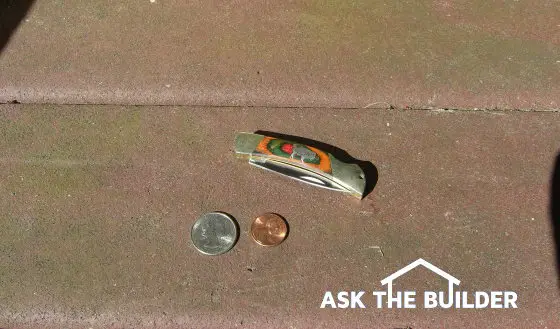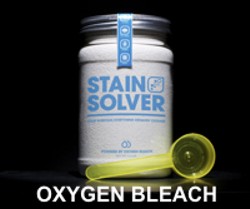Trex Decking

These dark spots on the composite decking are a mixture of algae, mildew or some other mold growth. Oxygen bleach almost always will restore the original look. PHOTO CREDIT: Tim Carter
DEAR TIM: We have Trex decking that we put down in 2008. The Trex lumber has developed dark spots all over it. It started with a few and has multiplied over the two-year period. What, in your opinion, is causing the spotting? How can it be removed? Is there anything that can be done to prevent the ugly spots? We purchased this material thinking it would be maintenance-free and are very unhappy. Trish A., Bristol, CT
DEAR TRISH: You’re not the first consumer to reach out to me with this issue about Trex composite decking. You’ll not be the last. What’s more, I have personal experience with this decking material as it’s on two very large decks and my front porch at my New Hampshire home. I didn’t install it, the previous owner did when the house was built eight years ago.
My own Trex decking has spotting issues, algae growth, and uneven coloration issues. As you might imagine, I’ve got lots of experience with decks of all types being involved with them for over 36 years. Believe it or not, it’s highly unlikely that the decking material itself is causing the entire problem. The issues you’re having can happen on just about any decking material. However, your deck and mine might be more prone to issues for a number of reasons.
The dark spots on your deck, based on the photo you sent me, appear to be mold and mildew. This spotting can happen on any deck. Mold and mildew feed on natural materials such as wood fiber, natural sugars, dirt, dust, grease, oils, and food. If you have trees or other vegetation near your deck shading the decking, these might be manufacturing airborne sugars that coat the deck.
Some trees produce more of this than others. Perhaps you’ve seen this sap coat a freshly cleaned car that’s parked under a tree. The spots show up easily on the high-gloss surface of a car paint job, but are tough to detect on a flat finish such as your deck boards. The sugars can float through the air from trees near the deck.
The mold and mildew can also feed directly off of the wood fibers in your Trex decking. The FAQ page at the Trex web site clearly states that “ ... most of the materials used in making Trex are recycled ...” They go on to state that “ ... the materials are carefully processed to ensure the highest level of quality and performance.” However, it’s possible that mold and mildew spores could be already present in the raw recycled wood material that’s used to make the decking.
Add to this the possibility that the wood fibers in the decking may not have any preservative added to them at the factory. If this is the case, then the wood fibers, or concentrated areas of them in the decking could easily support the growth of mold and mildew. I see it happening on my own Trex deck.
A visit to the Trex decking web site reveals they have a comprehensive cleaning guide that may help you. They are quick to point out that a powerful pressure washer, one that delivers a pressure stream greater that 1,500 pounds per square inch (psi), is to be avoided. What’s more, never hold the pressure wand closer than 12 inches from the decking surface. A concentrated stream of high-pressure water can erode the wood fibers that’s in the decking.
No deck is maintenance free, not even the expensive composite decks. All will have to be periodically cleaned from time to time.
I personally have had the best luck cleaning my Trex deck with oxygen bleach is that it removes the gray coloration from the small wood fibers in my Trex making it look like new. The sun’s UV rays cause the wood fibers in the decking to turn gray.
I apply the oxygen-bleach solution and allow it to sit for 15 minutes never allowing it to evaporate. It’s best to work early or late in the day when the decking is in the shade. After the wait period, use a stiff scrub brush to clean the decking. Rinse with clear water from a garden hose. You’ll be amazed at how clean and new the decking will look.
Some spotting you see may not be mold or mildew. I see that on my own Trex decking. I’ve studied this very closely with a magnifying glass and believe it to be a manufacturing characteristic. It appears that the dark spots are areas where there is a higher concentration of the recycled colored plastic.
 If this is the case, it make sense that over time you’ll see uneven coloration as the thin film of plastic wears off those areas nearby that have more wood fibers than plastic.
If this is the case, it make sense that over time you’ll see uneven coloration as the thin film of plastic wears off those areas nearby that have more wood fibers than plastic.
I’ve visited a manufacturing plant where composite decking is made and saw how the wood fibers and plastic are kept separate until just before they enter the extruding machine. Although the manufacture makes every effort to mix the ingredients evenly, I can see how it’s possible that this doesn’t always happen.
Referenced: September 8, 2010 Newsletter.
Column 847

One Response to Trex Decking